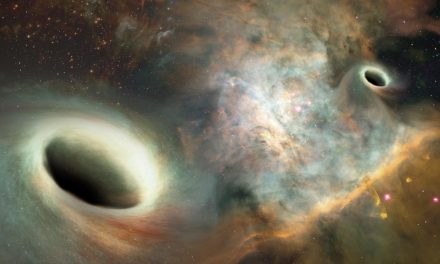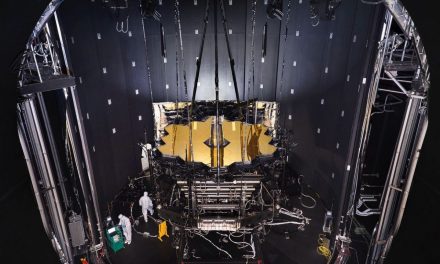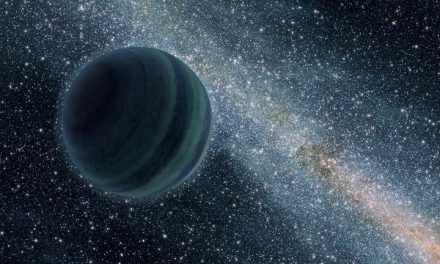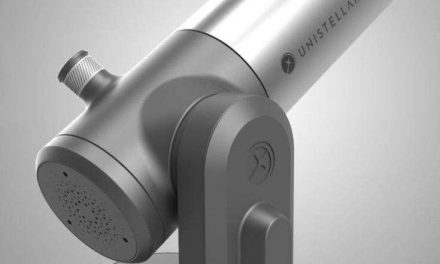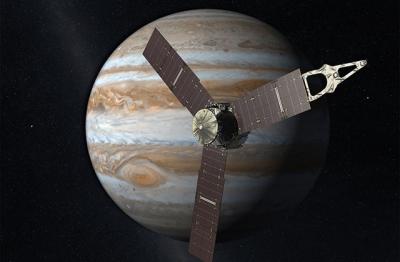
CAPTION
Juno, carrying a University of Iowa-designed-and-built instrument, will arrive at Jupiter in July 2016.
CREDIT
NASA/JPL-Caltech
As part of a scientific investigation that began with an August 2011 launch, NASA’s Juno spacecraft’s mission began in earnest when Juno arrived at Jupiter in July 2016. The NASA probe’s next milestone is a bird’s eye look at Jupiter’s Great Red Spot, a 16,000 kilometer (10,000-miles) wide storm. Juno’s cloud-penetrating equipment including Imager and JunoCam, will be science’s first unobstructed close-up of the most iconic feature of Jupiter. The massive storm was first observed in 1830 and has possibly existed for more than 350 years.
Juno has orbited Jupiter now for a year, and has about 8 months left for a total of 37 orbits. The probe’s major objectives are to understand the origin and evolution of the solar system’s largest planet by:
- Determining the amount of water and ammonia present in the atmosphere.
- Observing the dynamics of Jupiter’s upper atmosphere.
- Study the nature of Jupiter’s auroras and the role radio and plasma waves play in their generation.
- Mapping the planet’s magnetic and gravity fields to learn more about its deep interior including the size of its core.
Juno’s final act in February 2018, will be a fiery entry into Jupiter’s atmosphere as a means of guaranteeing it doesn’t impact the nearby moon Europa and possibly contaminate that icy world with microbes from Earth. Otherwise it could jeopardize future missions to that moon designed to determine whether life had begun there on its own. Icy Europa is thought to have a global ocean of water in contact with a rocky sea bottom.


